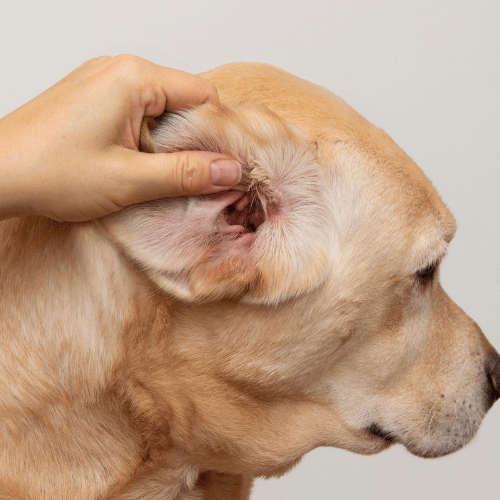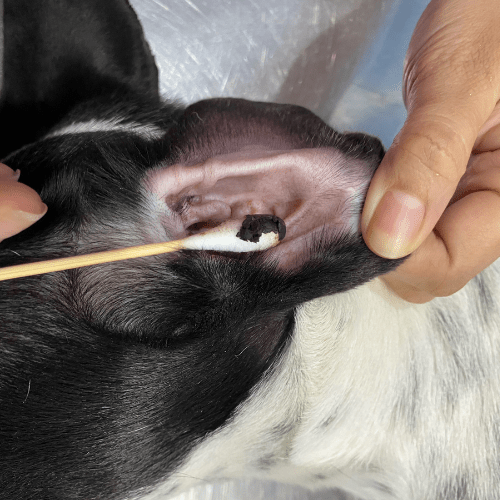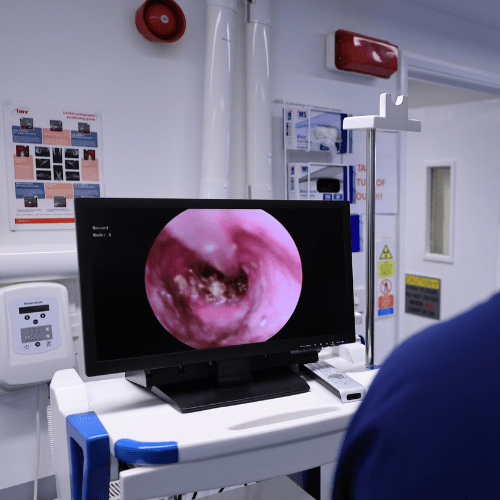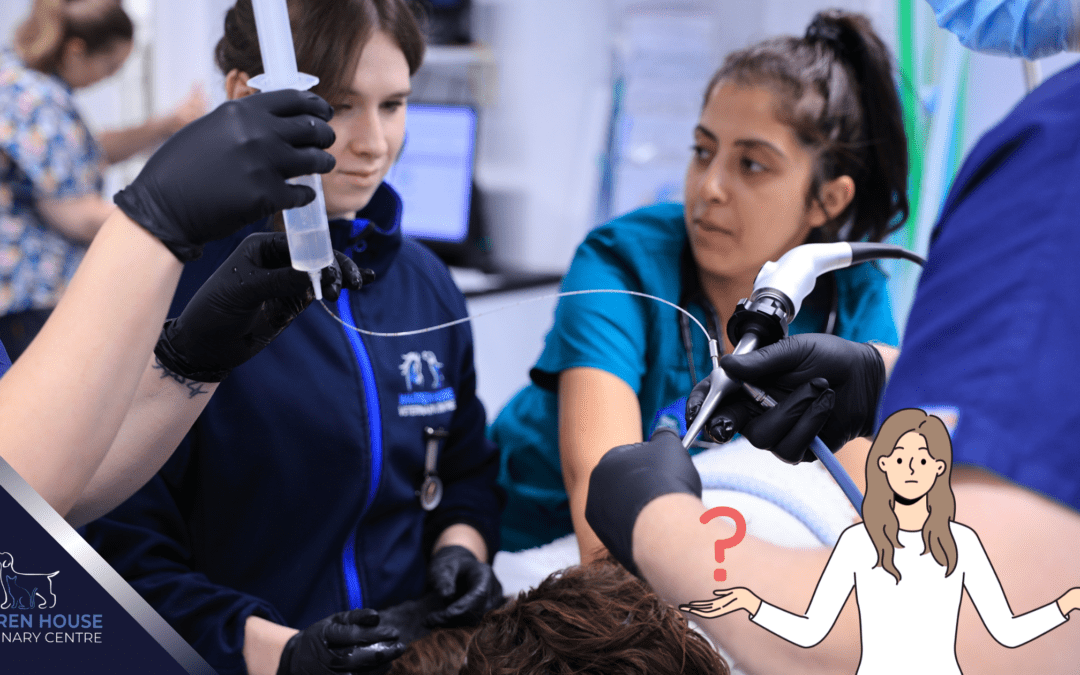Understanding the difference between the two procedures!
At Warren House Veterinary Centre, we’re committed to providing the highest quality care for your pets. One of the essential tools in diagnosing ear conditions in animals is the otoscope. However, with advancements in veterinary technology, we now also offer video otoscopy, which provides even greater precision and insight. Let’s explore the differences between these two valuable diagnostic techniques and how they benefit your pet’s health.
What is otoscopy?
Otoscopy is a routine procedure that involves the use of an otoscope, a handheld device with a light and magnifying lens, to examine the ear canal and eardrum. It’s a quick and effective way for veterinarians to check for common ear issues such as:

Ear Infections
Caused by bacteria or yeast, ear infections lead to inflammation, discomfort, and discharge in the ear canal. Common signs include head shaking, scratching at the ears, and a foul odour.
Ear Mites
Tiny parasites that live in the ear canal, and ear mites can cause intense itching and irritation. Pets often scratch their ears and shake their heads frequently. These mites are highly contagious between animals.


Excessive Wax Buildup
Some pets produce more ear wax than normal, which can trap debris and lead to discomfort or infection. It can also be a sign of an underlying issue like allergies or infection.
Foreign Objects (like grass seeds)
Grass seeds or other small objects can become lodged in the ear canal, causing irritation, pain, and sometimes infection. Pets may paw at their ears or shake their heads to try to dislodge the object.

What is Video Otoscopy?
Video otoscopy takes ear examination to the next level by using a video camera attached to the otoscope. This allows the veterinarian to capture real-time images and video of the ear canal and eardrum on a screen. Some key advantages of video otoscopy include:
- Enhanced visualisation: The high-quality imagery gives a clearer and more detailed view of the ear structures, which helps in diagnosing more complex conditions.
- Client communication: Owners can see what the vet is looking at on the screen, which helps explain the diagnosis and treatment plan more effectively.
- Improved accuracy: The ability to visualise the ear canal in such detail means that veterinarians can perform more precise treatments, such as removing foreign objects, cleaning the ear, or conducting biopsies, all under direct visual guidance.
Why Choose Video Otoscopy?
While traditional otoscopy is effective for many routine cases, video otoscopy is especially beneficial for more complicated or chronic ear conditions. It provides a comprehensive view of deep-seated infections, polyps, or tumours that might not be visible with a standard otoscope. Additionally, video otoscopy allows for documentation of the ear’s condition, which is useful for tracking progress during treatment.
Warren House Vets Ear Clinic Offer:
At Warren House Veterinary Centre, we offer a comprehensive Ear Clinic package for just £79. This 30-minute consultation is conducted by our practice owner, Gary Kelly, and includes:
- A thorough examination
- Swab collection
- AI cytology
- Video otoscopy (if the patient allows)
It’s an excellent opportunity to get a detailed look into your pet’s ear health. Please note that sedation or general anaesthesia is not included in the price and may be recommended if necessary for a more comfortable and thorough examination.
In Summary
Both otoscopy and video otoscopy are important tools in diagnosing and treating ear conditions, but video otoscopy provides enhanced detail and allows for a more thorough investigation. Whether your pet is experiencing a routine ear infection or a more complex issue, our team at Warren House Veterinary Centre is here to ensure they receive the best care possible.
If you’re concerned about your pet’s ears or have noticed signs of discomfort like head shaking, ear scratching, or discharge, don’t hesitate to book an appointment. We’ll determine the best diagnostic approach to get your pet back to feeling their best.

